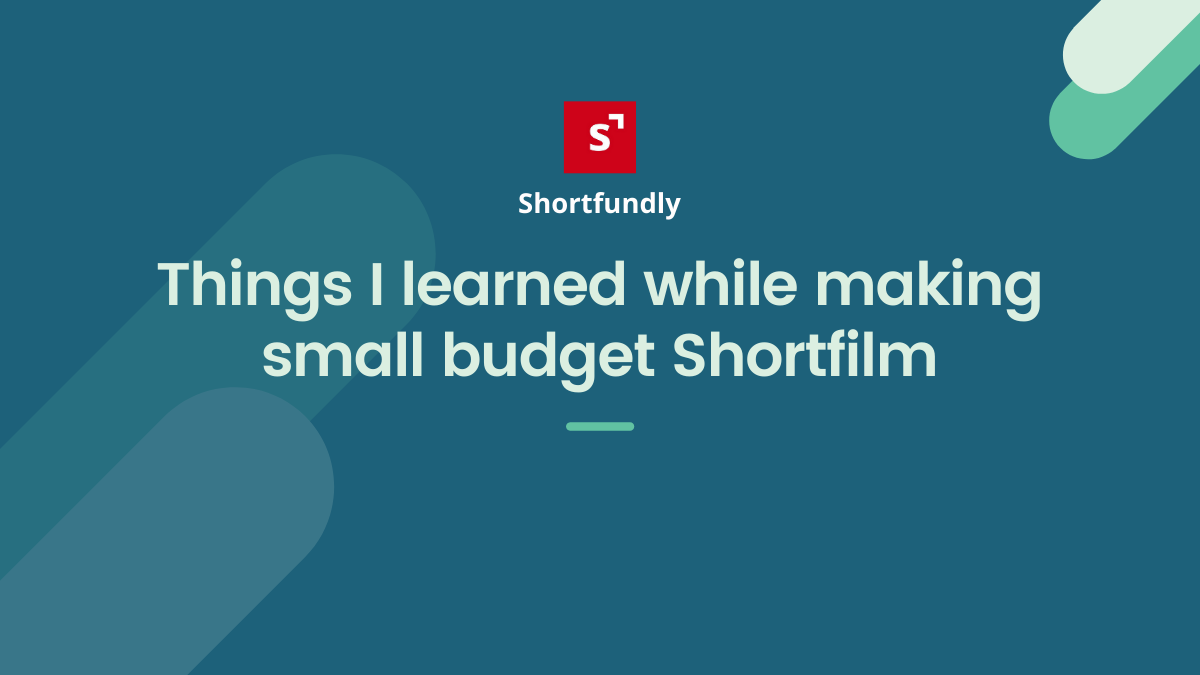Table of Contents
Making Small Budget Shortfilm
Making small budget shortfilm with the availability of today’s technology has become a relatively simple attempt for us. Assuming that you own a prosper computer, a digital camcorder and some kind of editing software, you are basically ready to go. Add some decent actors, a simple script and you’re a filmmaker!
Before gearing up, we need to familiarize with some basic Budgeting and planning concepts to make sure we can meet all the benchmarks to be a Successful Film Maker without fallouts.
Why Planning and Budgeting are important?
A plan is like a map. When following a plan, we can always see how much we have progressed towards the Final Release and how far you are from sign off. Knowing where we are is essential for making good decisions on where to go or what to do next. It is also crucial for meeting our needs during each action step with our time, money, or other resources. With careful planning, we often can see if at some point we are likely to face a problem. It is much easier to adjust our plan to avoid or smoother a coming crisis, rather than to deal with the crisis when it comes unexpectedly.
To start with, I have Eight step strategy, which will also help you to complete the Short film without any setback and within the Budget.Let’s dive into it.
Step 1: Brainstorming
Think about the purpose of the story.
Make a spider graph and think of key words, events and images linked to the Main Theme. How do they connect and relate to each other? We might want to look in magazines and newspapers, or search the internet for related articles. Now we are ready with a basic outline of our story.
Step 2: Planning
Now that we have a basic outline of our story using the cast available to us, Let’s create a bit of a character for each role. What is the personality of each character? Do they have a specific way of speaking? There are many ways to create individual characters for each role which helps when writing the final draft of the script. Look around; see who is up for the excitement involved in making even a short film. Then work around what we have when writing the final draft of the script. Don’t forget that although we might only have a few characters in our story, that there will be background actors required, and also we need to set a production assistant to help organize things during the day of filming.
Step 3: Framing
The way that we shoot the film is an important part of getting the film right. Now is the time to experiment with basic camera angles. We Take some time to practice the shots before making our film and see how it can relate to what we want to say.
Step 4: Storyboards
Now we have an outline of a script, and an understanding of the various camera angles and shots we can use, we will begin to merge these to break our story into scenes to make a storyboard. A storyboard looks like a comic book, with pictures of scenes and a description of what is happening in the picture and/or some dialogue. A good storyboard will piece together the beginning, middle, and end and help us to think of how to visualize each scene using which camera angles and shot sizes.
Step 5: Scheduling
This is probably the trickiest part of film-making.
Now you have your storyboard, we might find some of our scenes happen at different times in the story but in the same location. This means when we have to make a schedule of filming our scenes, that we do all of the different scenes in the same location on the same day. Voilà! Be careful with props, our characters may need to be wearing the same clothes for different scenes on different days that in the film are the same day. This is called ‘continuity’ and is highly essential while making small budget shortfilm.
| Scene | Location | Props / Dress / Equipment | Notes | Costs |
| 1 | Bristo Café | Bags/Hero wears a Black T-shirt and Blue Jeans/ Mac notebook | Coffee needs to be bought during the scene | Rs.200 |
Step 6: And ACTION!
Now comes the fun part: filming.
Try and film the same scenes from different angles so that when we come to editing, the audience will have different things to look at. If we are left with only one camera, film the same scene several times from different angles. Be prepared to have hours of footage for what will be our final 3-minute film. Allow for around two hours of filming per scene or per 30 seconds you will use – this is based on my previous experience with the Editing Team.
Time coding is also really crucial for when we begin to edit the film. All we need will be to have a pen and paper ready to record the various takes of our scenes and record the time codes next to them.
Step 7: Post-Production
Now comes the most time-consuming part: Editing or post-production.
Now we have our script, storyboard, schedule and our time-coded notes on how all your scenes went. Using all our resources, it’s time to piece together our film.
We have various Open Source software available over the internet, or check out for Movie Maker with Windows or Apple iMovie. If we have a bigger budget, we can also look at Final Cut Pro or Adobe Premiere.
Once we are happy and satisfied with the rough cut, we need to review it with people who can give us an honest opinion. We can Use these comments to polish up the rough cut until we have our final cut, making sure we have all the information wanted to convey in the film as well as continuity and that the final film is under our anticipated time limit.
Step 8: Release
So now we have our small budget Shortfilm and it is polished and ready to release. Congratulations!
Before publishing on any platform, Review the terms and conditions, Permissions and copy right infringements. We also need signed release forms that show the people in our film have agreed to take part and to be entered into any film competition/festivals.
Once it is done, pat yourself on the back and relax! Let’s keep the fingers crossed and waiting for review!
A word of warning…
Don’t get obsessed with having the latest filmmaking gear. Artists don’t waste time worrying that they’re using last year’s pencils and that great camera we bought a few months ago hasn’t suddenly become worthless because there’s a new one out.
I used to plunge through various websites when I look for an impressive information for my blog posts. For this one, I landed up in a competition webpage where one entry came from two 16-year old who used an ancient mobile phone that only shot in black and white. Instead of saying “this phone sucks, we need to save up for an expensive camera”; they thought “what kind of film can we make with this phone?” So they made a clever parody of an old silent film – with inter-titles (words between the pictures) and over-the-top physical acting – and won their category. They understood film storytelling and that was what made their film great.
Ideas, not gear, are the most important things filmmakers need.
Also read short film review post from shortfundly team:
- Closing Time (2023) – Short Film Review
- C/o Kilpakkam – A Short Film Review
- Infinity And Beyond – Sci-fi English Short film Rating – 9/10
- ABHIVRDH Hindi Drama Shortfilm 2022 – Review & Rating – 7.5/10
- THE AWAKENING Short Film – Review & Rating – 9.0/10
- COFFEINED AT 15 (2022) | AWARD WINNING SHORTFILM – Review & Rating – 9.0/10
- Mulaquat Ansuni – Short Film Review & Rating – 7/10
- ONCE MORE – Telugu Short film Review & Rating – 9.0/10
- citiZEN – Tamil Short film Review & Rating – 9.0/10
- WRITER CHOR – Hindi Short film Review & Rating – 7.0/10
About Shortfundly
Shortfundly is an online technology and design-focused, data-driven OTT platform company that curates and shares the best short films and stories through our global multi-platform network. Our video and editorial platform enables a global audience to easily discover, watch, and share unique stories anywhere on their desktop and mobile devices.
Our vision is to continually grow the community of short film audiences to enable a wide and accessible market reach for short films and become the leading micro-cinema/short film platform.

















